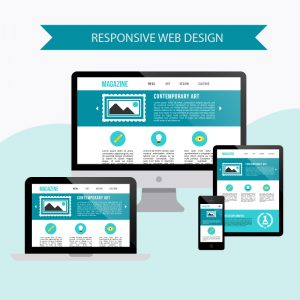An Introduction To MERN Stack

A technology stack refers to the framework of technology services that are used to build, run and maintain a single application. Also called as technology infrastructure, solutions stack or data ecosystem, a technology stack comprises of all the languages and coding frameworks that make up a successful web application.
Let us take Facebook for example. Facebook as an application makes use of a combination of programming languages and frameworks like HTML, CSS, JavaScript, ReactJS and PHP. Thus, Facebook’s technology stack refers to these languages that make up the application.
1. Introduction to MERN Stack

There are many technology stacks used for web and application development. One of these tech stacks is called the MERN stack. Built on four primary software components, MongoDB, ExpressJS, ReactJS and NodeJS, the MERN tech stack is a comprehensive web development framework used by developers to create high-quality websites and applications.
2. Components of MERN Stack
The four main components of the MERN stack are as follows:
3. Advantages of MERN Stack

4.Prerequisites for a MERN Stack Developer
If you want to become a MERN stack developer, here are some of the prerequisites you would require:
Article Resource:-https://www.eligocs.com/mern-stack/an-introduction-to-mern-stack/
Will Chatbots Change The Customer Experience-The Future Of Customer Experience?

When customer experiences hinge on more than just customer service, Chatbots help you rise to the occasion. Often supported by Artificial Intelligence, the software is built to converse with human users over the internet via websites, messaging programs, apps and telephone. Chatbots analyze user requests and respond intelligently, the way a human would.
Chatbots are emerging as the norm, helping drive customer engagements in conjunction with classic touch-points, such as social media, telephone, email and more. If Global Market Insights is to be believed, the global Chatbots market would be well over $1.3 billion by 2024. Per another study, 53% of service firms plan to incorporate Chatbots within the next 18 months.
Why and how Chatbots are changing the customer experience? Let’s discuss, in detail.
1. Natural Language Processing:

Thanks to the headways in Artificial Intelligence, Chatbots are getting more sophisticated with better abilities in understanding conversations and making decisions. More specifically, Natural Language Processing (NLP) is being leveraged to help bots to discern what the user is saying or typing, and respond more sharply. As NLP evolves, Chatbots are getting adept recognizing the conversation’s context, handling dialogue and tailoring a response based on the conversation.
2. Drive Lead Generation:

Let Chatbots drive leads, and help grow your customer base and profits. First, these programs engage in early support interactions with users, creating more qualified leads to be capitalized by sales reps later on. Secondly, when chatbot directs a customer to your website, sorting out their preferences is easy and quick. This, in turn, helps you create and deliver customized and effective marketing messages. Imagine sharing new offers and coupon codes to attract sales.
3. Enhance Capacity:
With Chatbots, you automate certain cumbersome tasks like providing the same information to different users redundantly. That frees you and your staff to concentrate on core competencies and other lines of business integral for growth and success. Data-driven Chatbots generate a huge amount of data, which can be analyzed to identify loopholes and ways to plug them. Plus, the software helps train new employees, bringing them onboard quickly and effectively.
4. Cut Down Operational Cost:
One key factor why Chatbots are the new interest zone in customer service is their cost-efficiency. Chatbots are capable of engaging multiple users simultaneously, relieving you from investing in a sizeable customer support staff. These programs can scale to your present and future needs, saving money that otherwise would be required for additional programming.
5. Minimize Errors:
Humans are prone to error but Chatbots aren’t. They leverage an enormous amount of data at their disposal to provide accurate information to the user, day in and day out. Any discrepancy in providing information related to policies, FAQs and more are eliminated outright. Unlike humans, a program doesn’t let emotions override decisions, have a bad day, and work 24/7/365. Plus, feel free to audit the chat logs for reasons of regulations if/when needed.

When customer satisfaction is a priority, Chatbots make sense. Chatbots are programmed to provide answers to customer queries quickly and smartly, round the clock. That goes well with millennials who lack the patience for long waits and misinformation. The user is likely to stick with your brand when your chatbot is providing real-time assistance across the buying journey. Plus, the data retrieved from Chatbots helps you to know customer preferences, and tailor services accordingly. That leads to high customer satisfaction and retention rates.
Versatility is another trait so inherent in Chatbots. They adapt to different business functions, from customer service and data gathering to employee training and on-boarding. Within the customer service domain, they are being utilized for labor-intensive tasks, such as Tier-1 support and customer satisfaction representation. Plus, chatbot belittles language barriers with customer support in multiple languages, ensuring seamless digital support in different regions.
Article Resource:-https://www.eligocs.com/chatbots/will-chatbots-change-the-customer-experience/
Native App Vs. Hybrid App:-Which Platform Is Best?

Over 3.5 billion people use smartphones worldwide. Each user spends roughly 162 minutes a day on their smartphones. About 90% of their smartphone time is spent in mobile applications. The stats suggest how important mobile development is for businesses, big or small.
There’re two approaches to mobile app development, native and hybrid. Each option has its share of pros and cons. Read on to know how they fare against each other on key parameters.
1.Native App vs. Hybrid App Comparison:
A native app is software developed for a particular operating system, think Java for Android and Swift for iOS. The software is developed in line with technical and user experience requirements of the given OS. This translates into faster performance and a more immersive user experience.
Built on the native language, these apps look and feel like the native apps of the device, and can achieve unity with the device’s in-built functions, such as camera, GPs, adress book, and more. Native apps are usually created for Android and iOS, the two operating systems with 99.6% share of the global OS market. Both OS offers advanced tools for easy native app development.
2.Apple iOS Development Tools:

3.Android Development Tools:

Once the app is ready, it needs to be submitted to the Google Play store for user downloads.
As the name suggests, hybrid apps are built using certain elements of both, native apps and web apps. For the uninitiated, web apps are websites that mimic apps in look and function but unlike apps, they aren’t installed on the device. Instead, you access them via internet browser.
Hybrid apps are regular web pages created for Android, iOS or any other specific operating system through HTML, HTML5, CSS, JavaScript, and other web technologies. The software is used in a native container wrapped in WebView to help access the device’s hardware features like camera, address book, GPS, and more. A few popular hybrid app development frameworks include React Native, Corona SDK, Flutter, Iconic, and Mobile Angular UI among others.
4.Native App Development Benefits:
Native apps stay significant for the host of benefits they bring forth.
5.Hybrid App Development Benefits:
From Facebook to Netflix, all top apps are hybrid apps. Here’re a few plausible reasons why.
Article Resource:-https://www.eligocs.com/app-development/native-app-vs-hybrid-app-which-platform-is-best/
Artificial Intelligence And Its Impact On Software Testing

Artificial Intelligence is changing the way traditional software tests are executed. From streamlining and automating tests to optimizing test results for more accurate results, AI can prove to be a boon for software testers worldwide.
Artificial intelligence has changed the way the software industry functions. Penetrating different areas of the industry, it has changed the game for several functions. Its potential impact on software testing is also being widely studied, with many expecting AI to provide huge savings on costs and resources related to software testing in the near future. And here are some ways the studies predict this will happen.
1.Predictive Analytics While Interpreting the User Behavior

AI can play a huge role in predictive and prescriptive analytics. AI can work on already generated test data from automation suites and analyze the test results. The result of these analysis can be used to identify and correct defects while predicting quality via providing appropriate process parameters and right courses of actions.
2.Automation While Gathering Data from Landing Page, HTML Pages
AI tools have become more advanced, to the extent that they are now capable of gathering insightful data from HTML, landing and related pages from websites. The tools make use of this data to learn about the application of test cases to different business usage scenarios. This, in turn, makes it easier for them to train ML automation models to generate a varying pattern of test cases for apps, execute them, mark variations as issues, validate the differences and then fix these issues.
3.Error-Less Data
The enormity of data associated with source analysis can make even the experts in the industry make mistakes from time to time. In the case of software testing, these mistakes can turn out to be disastrous for the product reputation and positioning if caught by consumers or potential stakeholders.
The benefits of artificial intelligence are manifold in these situations. AI tools can enable testing systems to learn about source analysis and apply this knowledge to testing scenarios. This, in turn, will not only enhance the accuracy of test cases but also reduce the risks associated with human errors, reduce the run time of tests and increase the possibility of detecting bugs early on.
4.Risk Reduction

Many factors go into understanding application risks. Some of these include the complexity of tests, application usage and so on. AI tools make it easier to identify the test cases that need to be executed for different test cycles. These tools collect data from previously executed tests for a specific application, thus making it easier to identify changes in code as and when they are made. Therefore, defects arising in the program can be easily identified via proper feedback early on in the developmental stage. These defects can be identified and rectified with proper solutions at the earliest to reduce the risks associated with an error-ridden application.
5.Fix Defects When it is Less Costly
Repetition of manual testing methods is not only time-consuming but an expensive resource for the company. This is where artificial intelligence enters the picture. Artificial intelligence tools allow for the automation of tests that need to be repeated continuously or periodically. The automation helps these tests to run several times automatically without human intervention. At the end of each test cycle, potential bugs are identified and the source code is changed to rectify them. The result of this is automated tests that take only a matter of hours (as compared to days in manual testing) and can save a lot of money in resources.
6.Allow AI to up-rise Your Business
The myriad benefits of AI tools on software testing can, in turn, prove to be beneficial for businesses. Rather than relying on traditional testing methodologies, testers can move to automated and precision-based testing procedures for more accurate results, which can prove to be invaluable for the growth of the business.
Article Resource:-https://www.eligocs.com/ai/artificial-intelligence-and-its-impact-on-software-testing/
Investing In A Professional Logo Design – Reasons Explored

A well-designed logo is crucial to develop a business and its products and services. Opting for Professional Logo Designing Services has its benefits and can help elevate the brand’s name, reputation and business in the long run.
Talk about big brands like Amazon, Apple, Samsung, McDonald’s, Twitter, etc. and the first thing that comes to your minds it the logo these brands have. Over time, these logos have become iconic, so much so that the brand would not be recognizable without its logo. Such is the importance of logos in today’s world. And investing in professional logo design is something every business should undertake even before the brand is launched. Here are some reasons why.
1. First impression
The company name and logo are two of the most important factors that influence the buying decision of customers these days. Many studies have revealed that customers who encounter a brand make up their minds about it within the first two visits. As such, a well-designed logo is something that would influence a customer’s initial impression of your brand.
This is also the reason why you would need to invest in a professional logo designed by experts after carefully analyzing your business requirements and goals and then infusing them with the current market trends. The logo thus designed will represent your brand in the right sense and help create a positive first impression about your brand.
2.Build Your Brand Identity

A logo is a foundation upon which the rest of the brand is built. A logo plays an important role in providing a brand with a unique identity right from its inception. With time, it also becomes the most recognized feature of the brand and a connecting point between a business and its customers. A well-designed logo will bring together the brand name, brand literature, brand guidelines and the brand’s web presence into one cohesive unit, which makes it easier to measure ROI on business goals and strategies.
3.Make Your Brand Trustworthy Among People
As a brand grows, its reputation grows and so does its trustworthiness among customers. This implies the importance of having a professional logo, which would lure potential customers to your business. Rather than being turned away by tacky logo design, a customer will learn to trust a brand from its logo and associate all future ventures with the business with the logo as well. A customer who trusts your brand will most definitely recommend it to others and use the logo as a reference point for the same purpose.
If you guys are want to hire a logo designer for you then this article by
https://www.toptal.com/ can be very helpful for you. Read this post to know more :-
11 Best Freelance Logo Designers for Hire in Oct 2020 - Toptal®
This will help you in finding a perfect log designer according to your needs.
4.You can use your Professional Logo across all Social Media Platforms for the Promotion

Social media marketing has become a huge trend today. Nearly every other business has established its presence online and continues to lure customers from around the world. However, promoting a brand online requires you to adhere to certain strict guidelines about factors like file size, file type, image type, colour specifications, layout regulations and so on. A professionally designed logo will cater to all of these requirements with ease, thereby easing your burden when you promote your brand online. Since the virtual space is encompassed of different platforms, the use of a professional logo that meets all these requirements ensures minimal hassles when working with different platforms and formats.
A Professional Logo lasts for a Long Time
Your brand logo will ultimately become your main identifier in the market. Customers who trust your brand and remain loyal to it will use your brand as a connector to remember how good they feel about your brand. A visually appealing logo triggers a positive recall of your brand and business. And while in some cases, new customers might forget your brand name, they will remember your brand logo (if it sports a unique, creative design) and use the same to get back to you.
Article Resource:-https://www.eligocs.com/logo-designing/investing-in-a-professional-logo-design-reasons-explored/
What’s So Trendy About Game Development That Everyone Went Crazy Over It?

The rapid advancement of technology over the past few years has forced game developers to adopt the latest trends to make a significant mark in the game development sector. With the increasing demand for a better gaming experience, many famous IT companies have started working on offering the best Game Development Services to customers.
If you’re an avid game player, you might be aware of how the IT industry is quickly moving towards the latest game app development techniques. This craze has gone to a level where there’s no looking back. Plus, platforms like Twitter, Instagram, Facebook, etc. are also developing advanced and engaging mobile games for entertainment.
Witnessing the ongoing trends in this industry, it is obvious that upcoming game development trends in 2020 won’t slow down. Here are the crazy game development trends that you’ll see in the future.
1.Cloud Gaming:

Due to the rise of cloud computing, AAA gaming engines like Lumberyard are being designed to make the editing process simple. Users even don’t have to install new updates now or then with this technology advancement. Due to this factor, cloud gaming has become more attractive to consumers. Furthermore, collaborative gaming and various social media platforms increase the popularity of the games that will be developed for the cloud in the coming years.
2.VR & AR:

All thanks to Virtual Reality (VR) and Augmented Reality (AR), users are likely to enjoy a realistic gaming experience. Both VR and AR have grown extensively and are being loved by the game lovers. People are demanding more games in AR and VR format. This will result in endless game development opportunities for developers.
Moreover, this technology provides real-world experience to users in a virtual world. That’s why it has become the most popular technology to give you a feel of modernity. AR developers are skilled to smartly imply this latest technology to a specific platform to offer real-world experience to users in virtuality.
3.Multiplayer Feature:
Nowadays, more players like to play with their known friends or acquaintances. This has enabled users to enjoy the experience of playing with their friends, family or colleagues. However, adding this feature to the game is quite complicated for game developers, as it needs to be developed as per the functionality of multiple players in mind. This further helps players to engage with the whole community of gamers near them while opening more opportunities to enjoy interactive gaming sessions.
4.Rise of Mobile Gaming

With games like PUBG and Fortnite, there has been a great rise in the popularity of mobile gaming. This has opened up many mobile gaming development opportunities for futuristic game developers. Instead of heavy hand-held consoles, now mobiles have become a major contributor to enjoy a thrilling gaming experience.
5.Upcoming 5G Effect
In 2020, 5G internet is likely to bring a revolutionary change to the cloud gaming world. With high-speed internet, game developers will get more ways to experiment with high-definition and premium-quality graphics to make internet gaming smoother and more enjoyable.
Conclusion
The game development sector is quickly moving towards interactive, faster and smoother gaming experience. This means both mega gaming studios and freelance game developers are likely to work on multiple new technologies to come up with revolutionary games in the future. Considering all these advanced techniques, we can say they the future of game development will be more hyper-realistic, high-tech, high-speed and collaborative.
Article Resources:-https://www.eligocs.com/game-development/whats-so-trendy-about-game-development-that-everyone-went-crazy-over-it/
8 Universal Rules Of UI/UX Designing For Web Design Projects

A website or mobile application has to open quickly and perform efficiently to achieve SERPs and user loyalty. That’s where the User Interface (UI) and User Experience (UX) step in. UI is about the interaction between the user and the product while UX is the emotional outcome of the interaction. They go hand in hand and are equally important for Web Designing.
Here’re 8 universal UI and UX designing rules for all web developers to know and imbibe.
UX Design:
UX design usually precedes UI design. So, let’s start with the UX design strategies.
1.Keep it Responsive:

Websites and apps receive significant traffic via Smartphones. Your website needs to be responsive and mobile-friendly. These types of websites incorporate fluid and flexible layout that fits all screen sizes (from Smartphones and tabs to desktops) for an optimized browsing experience. Even Google algorithms prefer responsive and mobile-friendly websites for SERPs. However, ensure the responsive element doesn’t interfere with the website quality.
2.Ensure quick Loading Time:

Your website should load quickly. Slow load times not only frustrate users but also hamper interaction. Users prefer not to visit a website with a slow load time more than once. No one has the time and inclination for slow page loading time, after all. Such sites do not find favour with search engines either. Ensure going through WordPress resources for tips on speeding up your websites. Also, opt for a good web hosting server to keep your loading speeds up to the mark.
3.Make it Bulleted:
Users find it hard to deal with lengthy content, as it involves time and effort. Bullets, on the other hand, present all relevant information about your product or service in an easy to read format. The user can go through the information quickly and easily, and make buying decisions accordingly. The bullets can be paired with images to make the page look more attractive, and at the same time raise user engagement, product awareness and conversion rates.
4.Colour is Important:
Colour is perhaps the biggest visual element of your website. The right colour helps the website connect with the audience and send the right message across. Research suggests that different colours invoke different feelings. For example, bright yellow represents energy, and golden shades stand for antiquity, lavishness and wisdom. You are better off deciding colours for your website and the buttons based on the product you sell and your business’s bottom line.
UI Design:
Now that UX design essentials are out of the way, it’s time to focus on the UI design strategies.
1.Keep the page Importance-Based:
The thumb rule for a fine UI is to keep the page layout simple and importance-based. All key information needs to be presented in a way to attract user attention and ensure accessibility.
To this end, factor in the special relationship between all the page elements and put the UI elements thoughtfully. Avoid clutter and minimize visual elements. For readability sake, make the most of the headings, club similar elements collectively and add numbered items.
2.Stick to common UI Elements:
In web designing, form follows function. That calls for using common UI elements instead of unfamiliar, new ones to create your user interface. The user should be able to interact with the product quickly and easily, after all. Creativity can be compromised for the sake of functionality.
3.Be Good with Colour and Texture Usage:

The interface needs to be attractive and coherent, in line with the overall design scheme. So, be mindful of the hues, texture, contrast, and light when creating a user interface. All of them should be used strategically to draw user attention to the key information presented.
4.One Screen, One Action:
Visual clutter is detrimental for to website/app. It makes sense to endorse the one screen, one action principal. Herein, one screen should support one primary action only. Too many actions fitted into one screen confuse and distract the user, leading to low retention rates.
Article Resource:-https://www.eligocs.com/web-design/8-universal-rules-of-ui-ux-designing-for-web-design-projects/